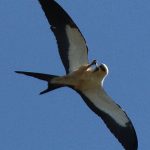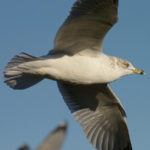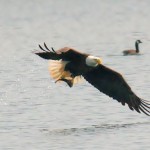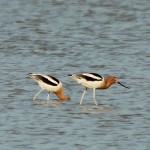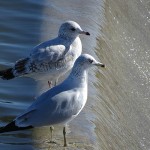Dateline – Denton County, October 11, 2019
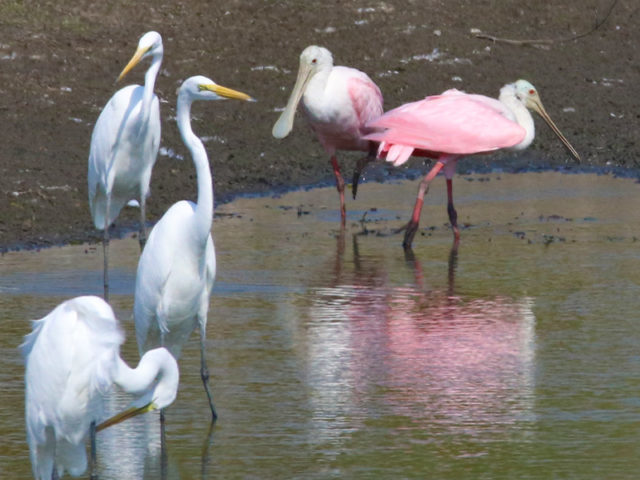
in early October
Things can change rapidly during fall in North Texas. Take these photos as a case in point. Just a week earlier this little pool of standing water had attracted half dozen or so pre-migratory Roseate Spoonbills. At nearly a foot deep, this small pond was perfect for larger wading birds like spoonbills, egrets, and ibises.
After another week of high early autumn temperatures, the water here had evaporated away to just an inch or two in depth. This alteration made the pool attractive to a different group of birds–the significantly smaller American Avocet. These migrating birds needed a place to stop and refuel on their way south, and this little pond fit the bill to a T.
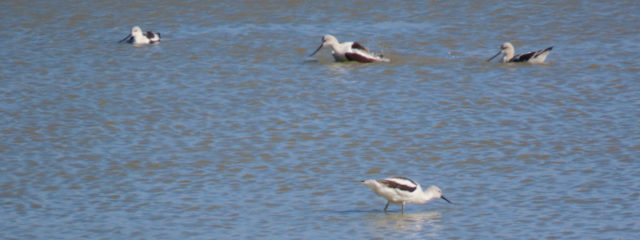
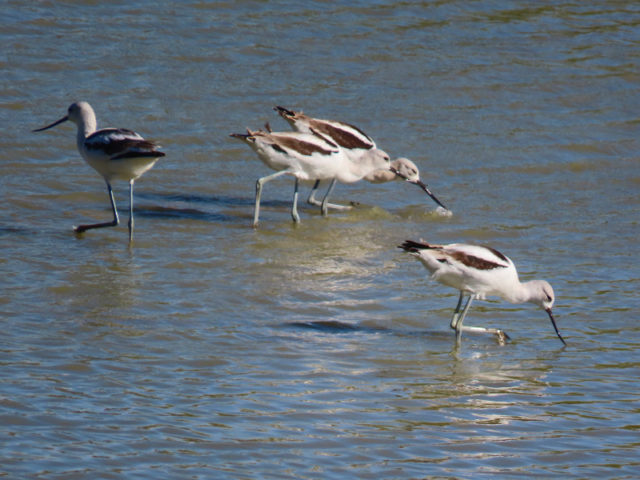
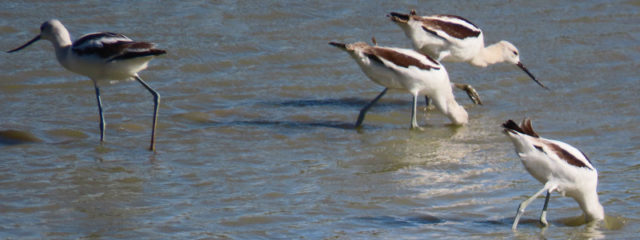
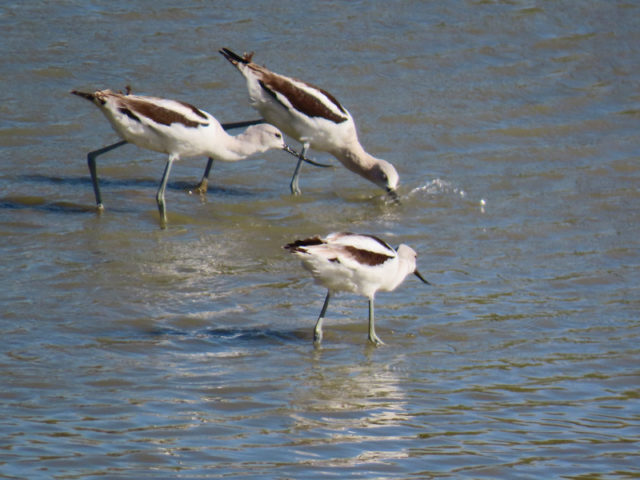
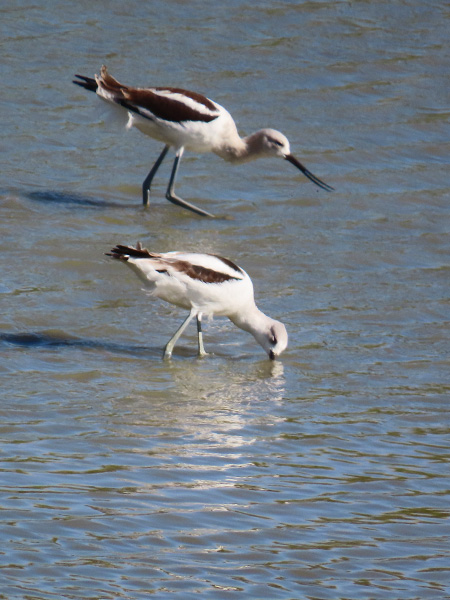
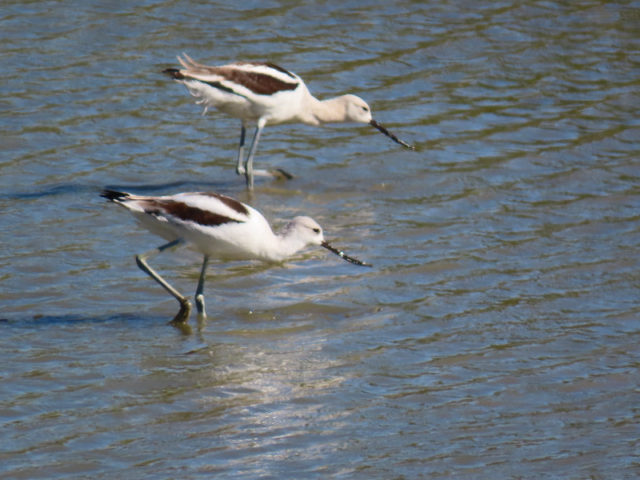
on small fish and the seeds of aquatic plants
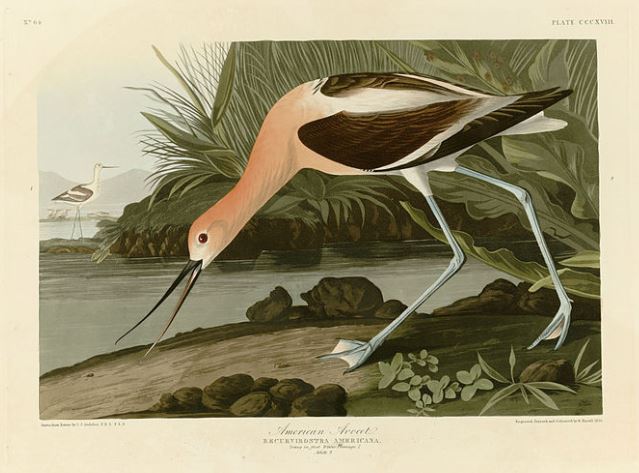
American Avocet in its breeding plumage
During the summer, these American Avocets breed high in the North American interior. As cooler weather approaches, they migrate south to areas along the gulf coast and in Mexico to overwinter.
American Avocets are roughly crow-sized birds. They have an exaggerated bills and extra long legs, with webbed feet, to aid in their wading-base foraging.
Avocets are black in white in coloration for most of the year, but during the breeding season, these birds sport a rusty colored plumage on their heads and necks. In the winter, they lose this extra bit of color and become strictly black and white once again.
Here is some of what Wikipedia has to say about the American Avocet…
The American avocet measures 40–51 cm (16–20 in) in length, has a wingspan of 68–76 cm (27–30 in) and weighs 275–420 g (9.7–14.8 oz). The bill is black, pointed, and curved slightly upwards towards the tip. It is long, surpassing twice the length of the avocet’s small, rounded head. Like many waders, the avocet has long, slender legs and slightly webbed feet. The legs are a pastel grey-blue, giving it its colloquial name, blue shanks. The plumage is black and white on the back, with white on the underbelly. During the breeding season, the plumage is brassy orange on the head and neck, continuing somewhat down to the breast. After the breeding season, these bright feathers are swapped out for white and grey ones. The avocet commonly preens its feathers – this is considered to be a comfort movement.
American avocets were previously found across most of the United States until extirpated from the East Coast. The breeding habitat consists of marshes, beaches, prairie ponds, and shallow lakes in the mid-west, as far north as southern Canada. These breeding grounds are largely in areas just east of the rocky mountains including parts of Alberta, Saskatchewan, Montana, Idaho, Washington, Utah, North and South Dakota, Nebraska, Colorado, and even down to parts of New Mexico, Oklahoma and Texas. Their migration route lands them in almost every state in the western United States. The avocet’s wintering grounds are mainly coastal. Along the Atlantic Ocean, they are found in North and South Carolina, Georgia and Florida. There are also wintering grounds along the Gulf of Mexico in Florida, Texas, and Mexico, and along the Pacific Ocean in California and Mexico. There are resident populations in the Mexican States of Zacatecas, San Luis Potosi, Guanajuato, Hidalgo, Mexico City and Puebla, and in Central California.
Avocets tend to prefer habitats with fine sediments for foraging. In the winter, these birds feed extensively on brine shrimp. Usually, this entails the avocet pecking while walking or wading on the shore, but it can also swim to expand foraging area. During the breeding season, avocets continue to eat brine shrimp but switch mainly to consuming brine flies. Brine flies and brine fly larvae are so abundant in avocet breeding grounds that they often blacken the surface of any exposed mud. Brine flies sustain the avocet during its breeding season. The avocet employs both visual and tactile methods of feeding. The primary visual feeding method is pecking at flies. However the avocet will also feed by plunging (wherein the head and neck of the bird are submerged), snatching (wherein the bird catches a flying insect), and bill pursuit (wherein the bird repeatedly opens and closes its bill while moving its head along the surface of the water). Methods of tactile feeding include filtering, scraping, and scythe feeding
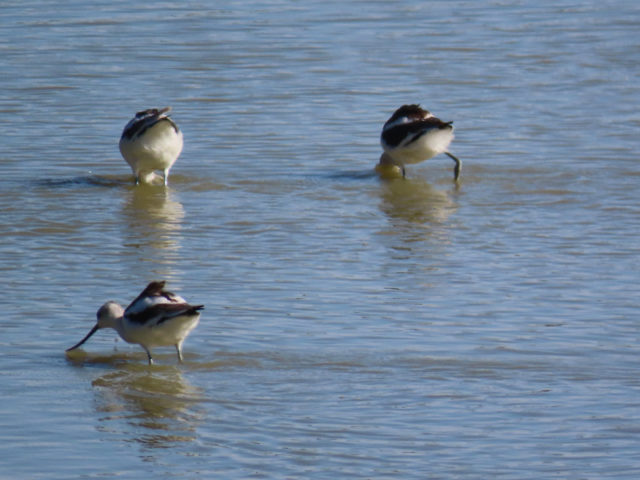
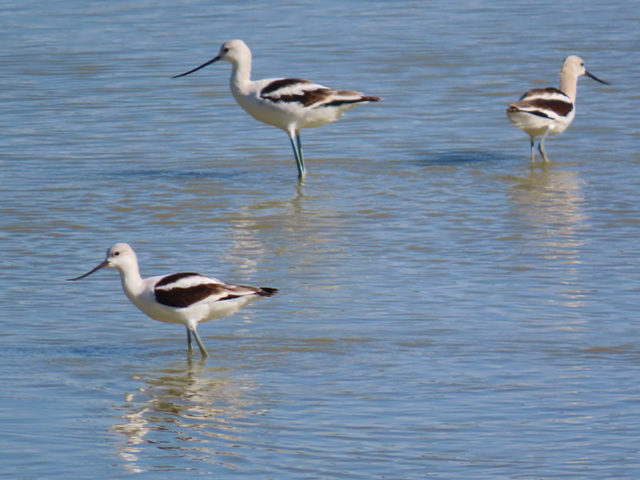
As summer draws to a close, it can be a coin toss with regards to what will happen to intermittent ponds in streams in the Dallas/Fort Worth Area. A dearth of rain will see these shallow bodies of water dry up completely–often through the winter and up until the coming of spring showers in April or May.
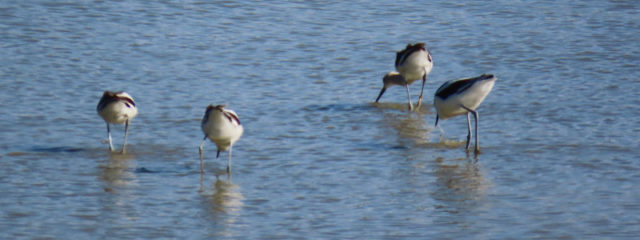
which includes shore birds, gulls, alcids, plovers, oystercatchers, and auks
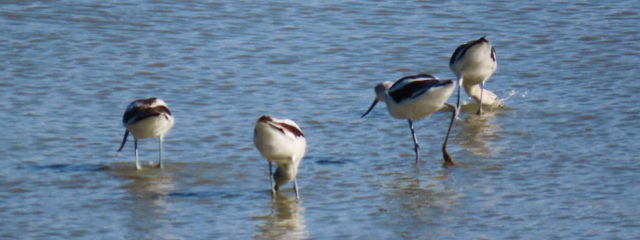
which they share with stilts and other species of avocets
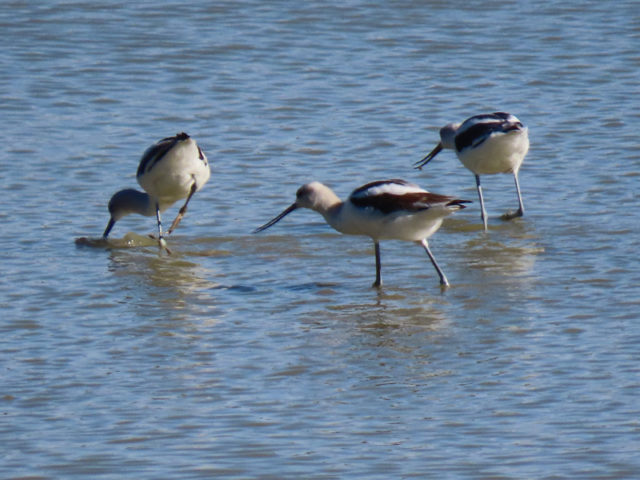
But, if we get the right kind of autumn rain showers–over the key areas and with adequate intensity–our streams and ponds can refill and hold water all winter long. It’s interesting to note how seemingly random weather patterns can alter an area–changing its appeal to different types of wildlife from year to year, month to month, and even week to week.
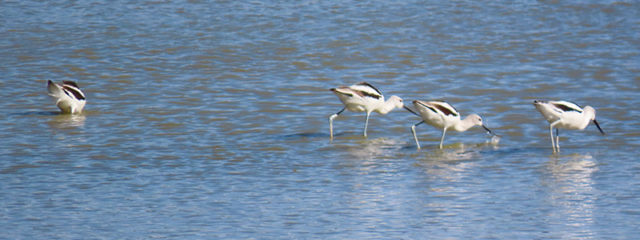
a shrill and melodic alarm bweet, which rises in inflection over time
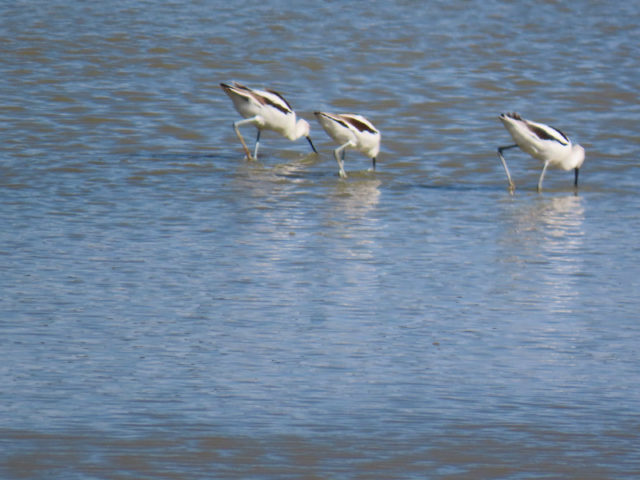
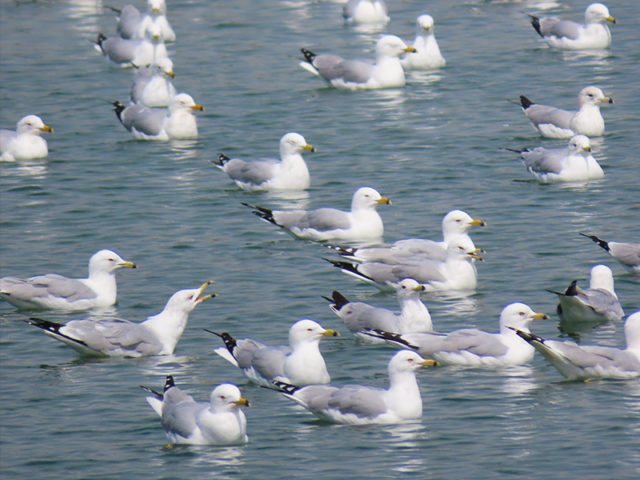
In the time since the avocets were photographed, the area has transitioned once again. Two and a half days of steady autumn showers largely refilled the small lake bed, adding a foot or more of depth to the water. The resulting wetland has now become attractive to over-wintering Ring-billed Gulls, which congregate here in the hundreds.


